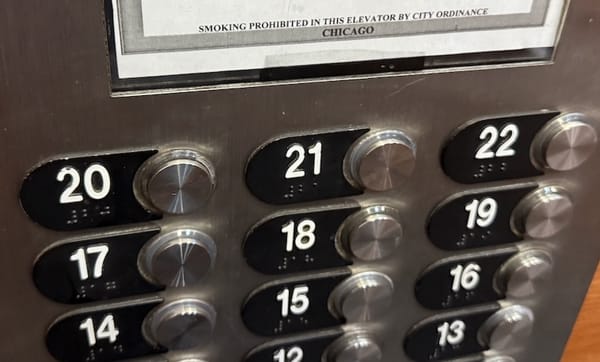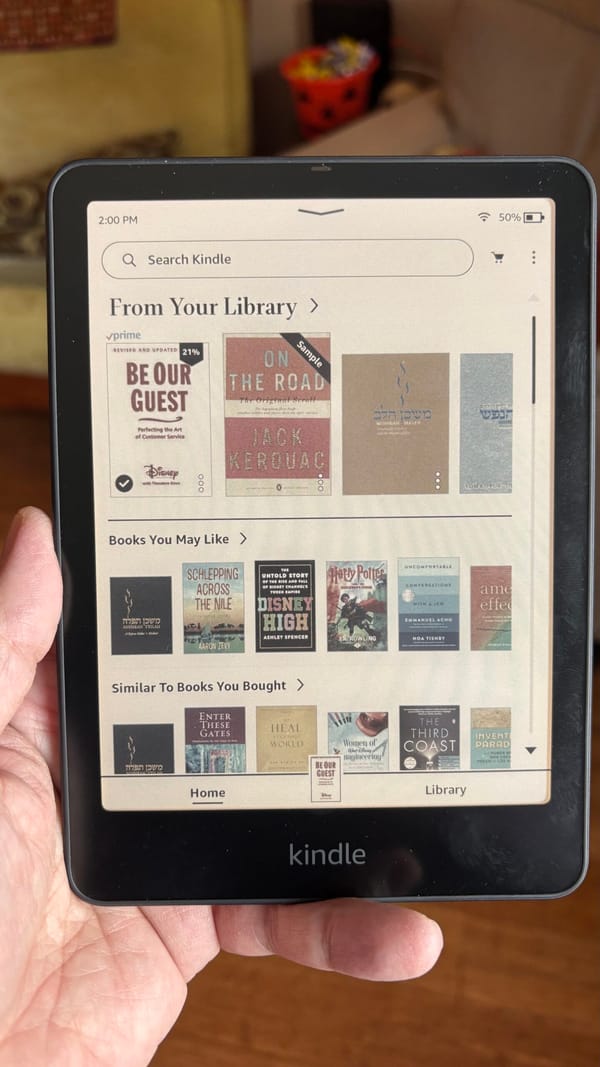You Got Your Bar Mitzah Ceremony in My Shabbat Morning Service!
When the b'nai mitzvah crowds elbow regular synagogue members out of the sanctuary, whose Shabbos is it, anyway?

As I don't need to tell any Jew reading this, the bane of attending Shabbat Shacharit (Sabbath morning) services for regular synagogue goers is often the size of the Bar Mitzvah crowd that stands--or sits--between you and your ability to fit in the door. The original point of B'nai Mitzvah ceremonies (the plural--including Bar Mitzvah ceremonies for boys and Bat Mitzvah ceremonies for girls) was for the community to welcome its newest members who have finally reached the age (13 for boys, 12 for girls) at which observing the mitzvot (commandments) finally counts.
In theory, these events are supposed to be regular Saturday morning worship services where the child in question chants from the Hebrew bible in public for the first time. But at many synagogues today, irrespective of denomination, they've become enormous festivals of personality, where dozens--and sometimes hundreds--of unaffiliated or out-of-town guests crowd out regular synagogue members, with the vanity of the families in question celebrated by tables full of photos of the unfortunate child caught in the middle of the "my kid's the greatest" maelstrom, self-serving speeches from parents and relatives, and a general air that this day--and this synagogue sanctuary--belong to one family, alone.
At my shul, Erev Shabbat (Friday night) services are our primary worship services, so on a regular Shabbos morning, at best maybe 20 worshippers show up. However, for the most part they're regulars; you can count on most of them to always be there to hear Torah read on Saturday morning. But at summer's end when B'nai Mitzvah season kicks in, Shabbos morning can be well over 100 strong, with most of those present there just for the kid's special day--many having no intention of ever setting foot in our shul again until the next simcha ("happy occasion"), if ever.
Usually you can find a seat, a siddur (prayer book), and a parking space (we're a liberal synagogue, after all.) But you don't always find a warm welcome. The family's guests are dressed up. If you're a regular member, most likely you are not. After all, it's your own weekly service. But anyone not wearing a suit or dress at the crack of Shabbos morning automatically gets the fish-eye from the unfamiliar hordes present as they walk in the door. Sometimes the service is truncated in funny places. Sometimes rubrics of the service are rewritten or replaced at the family's request.
This is typical. Everywhere. Jewish blogger Ilana DeBare calls it the Bar Mitzvah/Industrial Complex. Overall, it can make it very hard to feel like you're actually experiencing a worship service. Often, it just feels like a circus.
Last Saturday at my synagogue, it felt almost ominous. Hundreds of unfamiliar faces. No parking. No seats. No siddurim (prayerbooks.) No chumashim (Hebrew bibles.) Very obviously no thought given at all to the fact this was anything other than a closed event for one child and one family. I stayed in the sanctuary watching the self-worshipful pomp for five minutes.
Then I walked out, emailed a complaint to our cantor, tried not to cry on the bus ride back home, and davened (prayed) on my balcony. Why did I almost cry? Because, although it often seems that the balance of my movement thinks Torah is somehow on a continuum from optional to meaningless, this Reform Jew happens to think synagogue members--and, really all Jews--have an inalienable right to find a reliable welcome and have the ability to hear Torah read on Shabbos. Every Shabbos. Especially Shabbos. At shul. Their shul. Especially their shul.
I reached out to my Orthodox blogger friend, Chaviva Galatz (Kvetching Editor), and she noted in no uncertain terms that B'nai Mitzvah circuses are often the reason that some synagogues start to cleave themselves apart:
completely different shul
The emphasis in the quote is mine. My shul already has at least one break-away minyan (worship group)--that broke away to explore more traditional services, mind you. Larger synagogues may have several different minyans--some friendly to the main community, some not--meeting throughout the building or elsewhere on the Jewish Sabbath.
The common response from Jewish clergy about all this is that getting B'nai Mitzvah crowds in the door of a synagogue at least one time is worth the disruption to regular members and regular services. I think that's a myopic perspective. It's almost as if organized Judaism searches for ways to encourage Jews not to attend regular services or participate in synagogue life. We can't keep our 20-somethings engaged until they get married or have children as it is. When we finally get those Jewish families back, why use them to make Jews who've been here all along feel unwelcome on Shabbat?
If nothing else, every synagogue with enormous and ongoing B'nai Mitzvah ceremonies should make sure that regular members always--always--feel welcome. That includes reserving parking (for liberal shuls), seats (and good ones, not marginal ones in the boondocks), prayerbooks, and Hebrew bibles for regular members.
That also includes making sure that anyone officially stationed at the synagogue door not be greeting people with phrases like, "Welcome to our Yaakov's simcha!" Because the day is not about Yaakov's simcha. It is about Hashem. A simple "Gut Shabbos" or "Shabbat Shalom" is sufficient.
Finally, really. Tables of photos of the B'nai Mitzvah kids growing up? Really? That belongs inside your reception hall, not outside the door of the sanctuary.
Of course, at least in my movement, I'm sure all of this may be spitting in the wind. (Not at my shul, mind you, which I know would be open to these suggestions, but not every shul is as open-minded as mine.) After all, we can talk about God, and Torah, and Shabbat, and worship in an academic sense in Reform Judaism. But God forbid we actually experience it for real.
I encourage you to Google everything I've written here, too--just have some time, a footstool, and a tub of popcorn at the ready when you do. This is a giant pain in the Sabbath that isn't going away anytime soon.
Chaviva's advice to me was to try and find an alternative Saturday morning shul and just avoid my own synagogue on large B'nai Mitzvah days. The fact that I found that to be good advice makes me sad. Not that it's a bad thing to daven elsewhere. At least in Chicago, it's a wide and wonderful Jewish community and I've been eager to check out some other nearby shuls (Reform and Conservative.)
It's just sad to check out back-up synagogues because you never know when you're going to feel like you're not welcome at your own. And that's not what I would call a Gut Shabbos.
Update (Friday, December 9, 2011): For the good of the earth's continued revolution around the sun, readers are encouraged to browse the follow-up to this post, You Take the Good, You Take the Bad.




